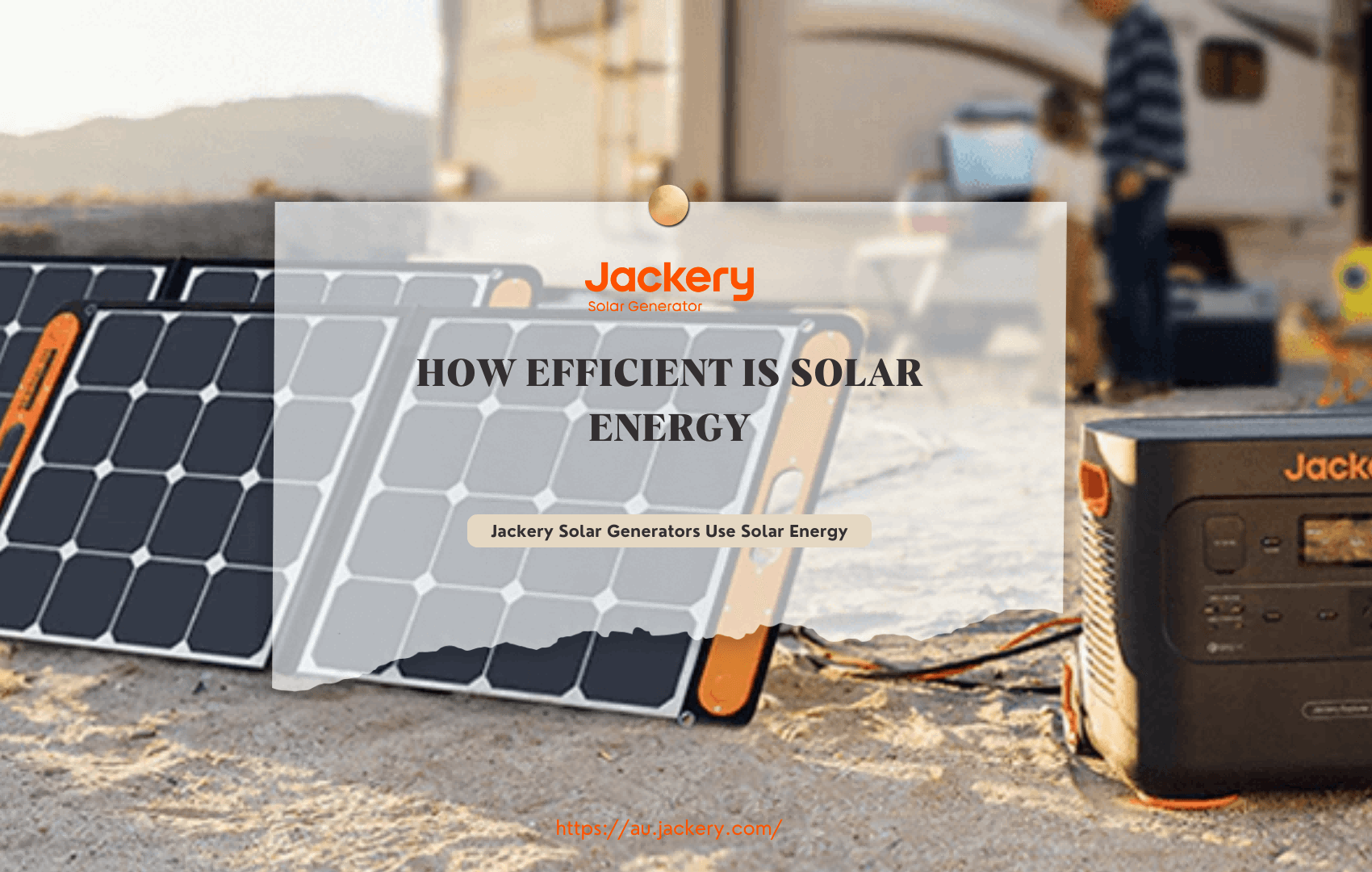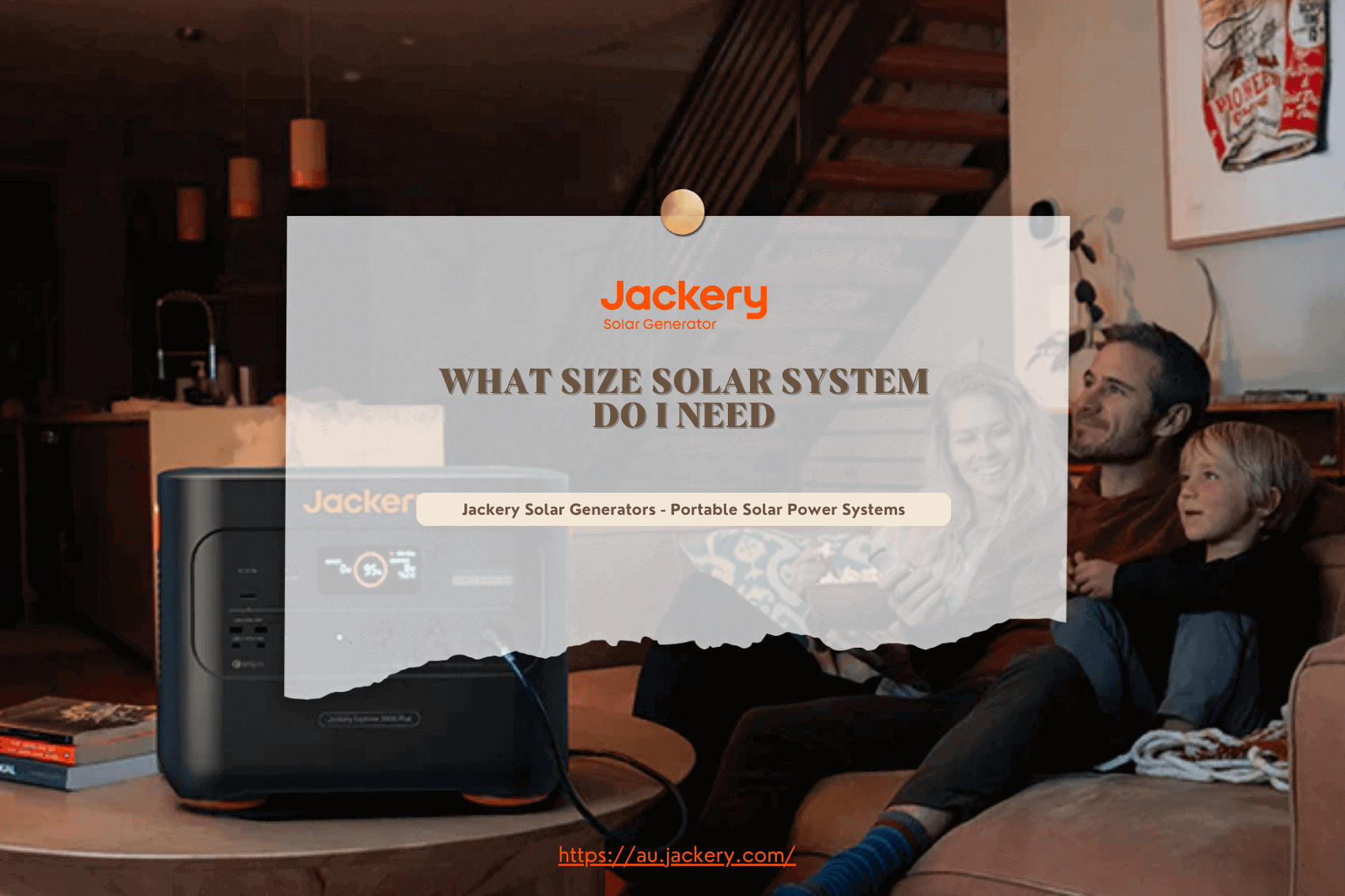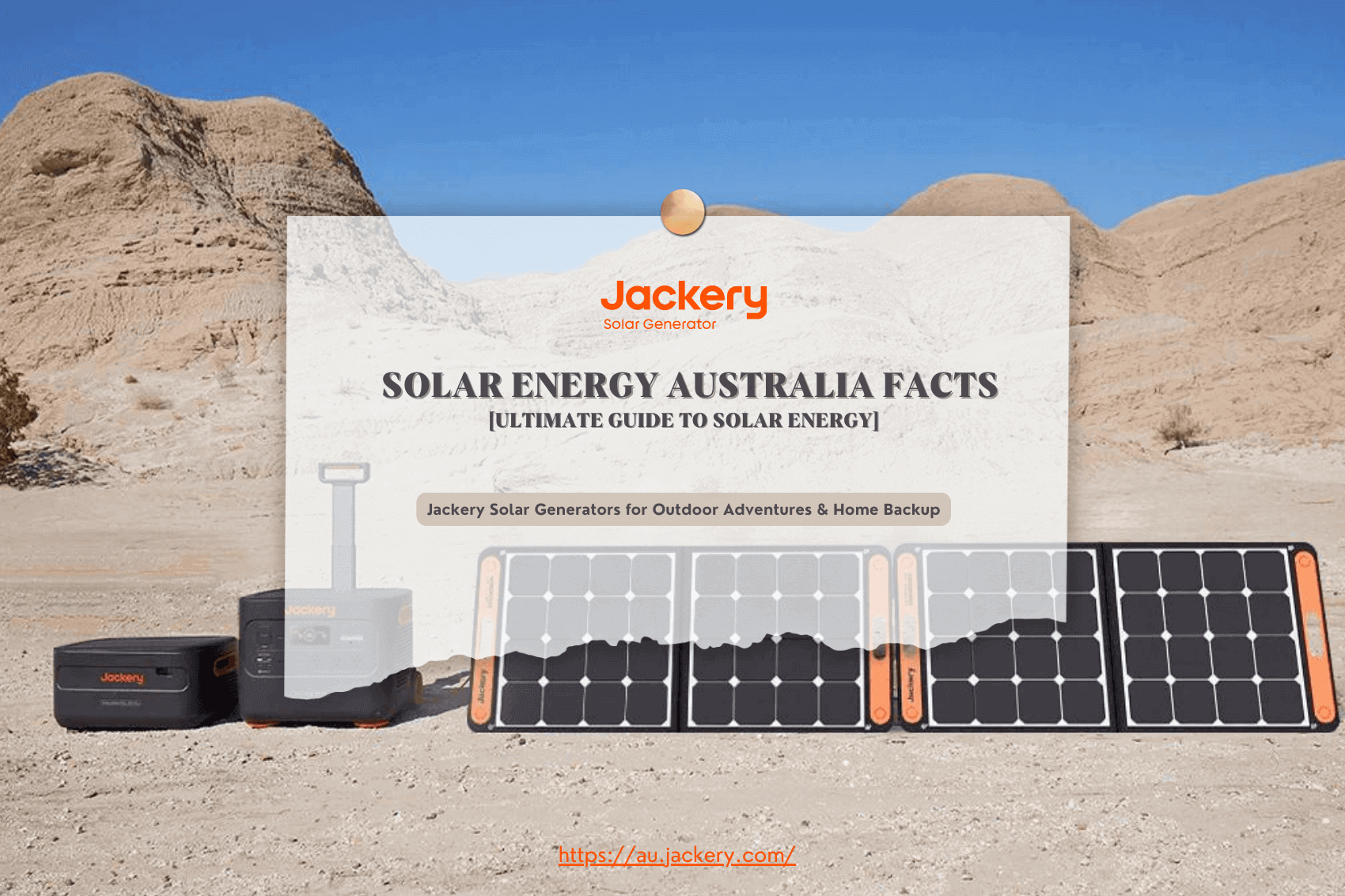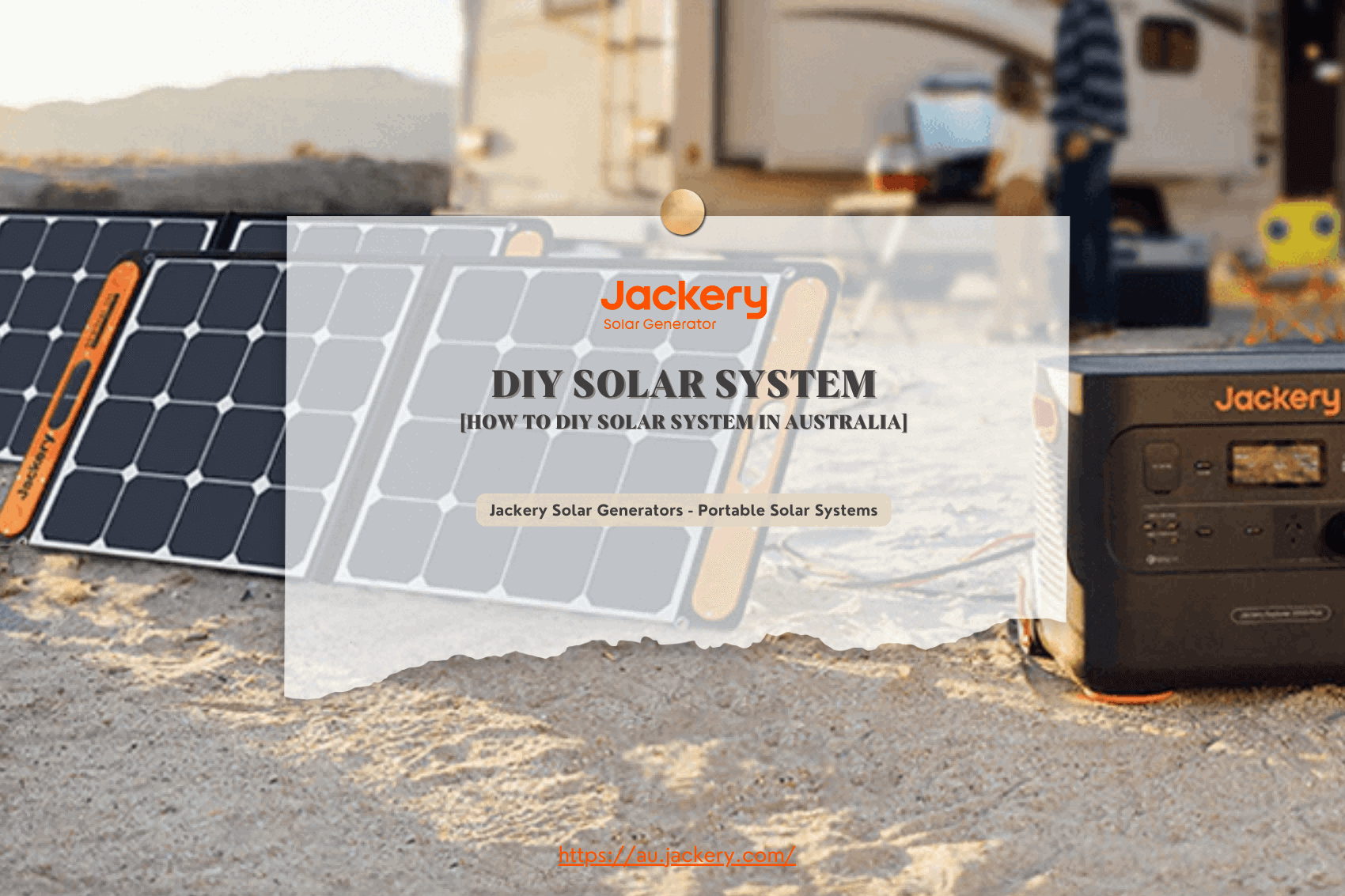|
Key Takeaways: |
|
• Solar energy efficiency tells you how much of the sun's energy a panel can turn into power that you can use. • In the past few years, solar panels have become much more efficient. They used to only convert about 15% of the energy from the sun into sound energy, but now they do about 20%. • Fossil fuels are helpful because they are a reliable supply. However, many know that gas, oil, and coal harm the environment. Solar energy is cleaner and safer. • Some factors that affect solar energy efficiency are the sun's wavelength, temperature, types of solar panels, inclination, and environmental factors. • We highly recommend Jackery Solar Generator 2000 Plus and 1000 Pro to maximise solar power. |
What Is Solar Energy Efficiency?
Solar energy efficiency tells you how much of the sun's energy a panel can turn into power that you can use. This is done by collecting the electricity from silicon or thin-film cells inside a solar panel that are exposed to sunlight.
These solar cells are stacked closely next to each other inside squares of glass meant to reflect light. The sunlight is then turned into electricity and sent to your house's circuit breaker box and all the rooms.
It's easy to measure. Twenty per cent efficiency means that a solar panel can turn twenty per cent of the sunlight that hits it into electricity. The most efficient solar panels are almost 23% efficient, which is reasonable considering that the first solar modules were only 6% efficient.
How Efficient Is Solar Energy?
In the past few years, solar panels have become much more efficient. They used to only convert about 15% of the energy from the sun into sound energy, but now they do about 20%. Very efficient solar panels can save as much as 25% of their power. Jackery Solar Panels are more efficient (25%), so they can take in more sunlight and turn it into power for you to use.
A standard-sized panel's power level has increased from 250W to 370W. The efficiency of a solar panel relies on both the efficiency of the photovoltaic cells (which includes the type and design of the cells) and the efficiency of the whole panel, which includes things like the shape and size of the cells.
The manufacturer's efficiency rate is a simple way to determine how well solar panels work. These ratings are derived under standardised test circumstances and provide a reliable indication of the panels' performance. The less efficient the panel, the less you will need it because the more efficient the panel, the more it will be made.
It costs more to get panels with higher efficiencies, but they may help you meet your energy needs better if you have little room. At the same time, solar panels' general cost-effectiveness has dropped, making them a more appealing option for businesses and homes.
Solar Energy Efficiency VS. Fossil Fuels Efficiency
It's likely not a surprise that the list of pros and cons of solar energy vs. fossil fuels is long. Fossil fuels are helpful because they are a reliable supply almost always available. Because you are the customer, all you have to think about when you want to go for a drive is whether your gas tank is full. However, many people already know that gas, oil, and coal harm you because they pollute a lot and are limited resources that will run out soon.
The list of "cons" of fossil fuels is pretty straightforward, except for one: building plants to make them is expensive and bad for the environment. Simply put, the costs of producing fossil fuels are much higher than those of making solar energy.
Solar panels are easy to put up on a roof or the ground and use a resource already there: sunshine. The ground has to be damaged to get fossil fuels. Many people don't know that fossil fuels don't just release greenhouse gases; the drilling process also damages the ground and makes the water dirty.
|
|
Solar Energy |
Fossil Fuels |
|
Efficiency Rate |
15%-25% |
20%-40% |
|
CO2 Emissions |
Lower (Production) |
Higher |
|
Longevity |
Higher |
Lower |
|
Costs |
Higher Initial Cost, Higher Payback |
Lower Initial Cost, Higher Ongoing Costs |
Solar Energy VS. Fossil Fuels: Efficiency
Solar panels have become much more efficient over the years. Some new panels can turn over 20% of sunlight into power. However, the efficiency of solar energy can be influenced by weather and location.
Because solar energy doesn't always work - it doesn't produce power at night, and on cloudy days, it does produce less - we need storage options or other power sources to ensure we always have energy.
Fossil fuels are reliable and have much energy packed into a small space. They can always provide power, no matter what the weather is like or what time of day it is. However, fossil fuel-based power plants vary in how efficient they are. Some new plants can be as efficient as 60% of the time.
When fossil fuels are burned, much energy is lost, primarily as heat. This makes fossil fuels less efficient over time than sustainable energy sources.
Solar Energy VS. Fossil Fuels: Environmental Impacts
Solar energy is known for leaving very little damage on the earth. Solar power doesn't release greenhouse gases or other pollution like fossil fuels. With the help of photovoltaic (PV) cells, solar panels can directly turn sunlight into energy without giving off any harmful emissions.
This process reduces carbon emissions and fights the warming effect, a vital part of the fight against climate change.
Fossil fuels, on the other hand, like coal, natural gas, and oil, are significant sources of air pollution and greenhouse gas releases. Many carbon dioxide, methane, and other pollutants are released when these fuels are burned. This makes global warming worse and damages the atmosphere.
In addition, getting and transporting fossil fuels often destroys habitats and causes oil spills, both of which hurt ecosystems in the long run.
Solar Energy VS. Fossil Fuels: Costs
Solar energy can have a high starting cost, primarily because of the solar panels and installation fees. However, these prices have decreased significantly over the years thanks to technological improvements.
Solar energy systems also don't cost much to run or maintain, which makes them more cost-effective over time. Many countries also offer subsidies and other incentives to get people to use solar energy, which lowers the cost even more.
In the past, it was cheaper to get and use fossil fuels. However, their prices can change quickly because of global tensions and changes in the market. They are more expensive than they seem because they have hidden costs like smog that can hurt your health and clean up the environment.
In the long term, fossil fuel costs will likely increase as sources run out and environmental rules get stricter.
What Factors Affect The Solar Energy Efficiency?
A PV cell doesn't always turn the sunlight that hits it into power. It's lost most of it. Several design factors limit a solar cell's ability to turn sunlight into electricity. More efficiency can be reached by designing with these things in mind.
1. Wavelength
Light comprises photons and energy packets in many different colours and energies. The wavelengths of sunshine that reach the earth's surface differ from ultraviolet to infrared.
Few photons are reflected when light hits the surface of a solar cell. Other photons go right through. Some photons that are taken in have their energy changed into heat. The rest of them have the right amount of energy to remove electrons from their atomic bonds, which creates charge carriers and power flow.
2. Temperature
Most of the time, solar cells work best when it is cold outside. When the temperature goes up, the qualities of the semiconductor change, which makes the current go up a little, but the voltage goes down a lot.
Extreme temperatures can also hurt the cells and other module materials, shortening their valuable lives. A lot of the sunshine that hits cells turns into heat, so managing heat well makes them work better and last longer.
3. Types of Solar Panels
Solar panel efficiency is greatly influenced by the type of solar cell used. The parts of a solar panel that turn sunlight into power are called solar cells. There are three types of silicon cells:
Monocrystalline Solar Cells are the best type of solar cell for home solar panels and are used by most people. The most efficient panels are monocrystalline ones made from a single piece of silicon cut into thin plates. These panels can achieve 17% to 24% efficiency. The solar cells in Jackery Solar Panels are monocrystalline, converting sunlight into electricity more efficiently and making more power.
Polycrystalline Solar Cells are less efficient; their ratings usually fall below 17%, so they can't be used to put solar panels on the new house.
Thin-film Solar Cells are the least useful and are only sometimes used in home solar systems. Even though these panels are less expensive, they might not work as well as others. They're often found in business settings. In general, they work 10% to 13% of the time.
Monocrystalline solar panels are the most popular because they work better than other cell types. It has only happened sometimes, though. Polycrystalline panels used to be the most popular because they were the cheapest option.

4. Solar Panel Inclination
The solar panels must be positioned correctly to get the most out of the sun's rays. This is known as solar panel angle or tilt. Panels flat on the ground won't work as well as ones tilted towards the sun.
The best tilt depends on where you live or work and the time of year. In real life, though, most settings don't let the tilt of the panels be changed every season. This is because they can be put up at different angles to fit the seasons and the roof's pitch.
5. Environmental Factors
Shade from close buildings, trees, or lots of clouds could be better for getting work done. How, after all, can your beautifully designed solar panels make power when there is no sun? But some light gets through the clouds.
A lot of dirt and dust can also make things less effective. A lot of the time, solar panels clean themselves. A rain shower can make your panels work better again in just a few minutes. You should clean the panels if you live in an arid area where intense dust storms are expected.
A common misunderstanding is that winter weather will make things less effective. This is often different. Solar panels are made to work in average temperatures, but they tend to work better when it's cooler. For most electrical gear, this is true. And because solar panels need light from the sun instead of heat, bright days might be the best work time.
People also need clarification about how well solar panels work when it snows. A small layer of snow won't get in the way of the sun's power.
Jackery Solar Generators with Higher Solar Energy Efficiency
Using solar energy, Jackery Solar Generators are easy ways to charge your phone. Connect Jackery Solar Panels and Portable Power Stations; solar energy will turn the electricity. A switch inside the power plant then changes the electricity into the form that your electronics can use.

Picking the right tools can make the most difference when making the most energy. The Jackery Solar Generator 1000 Pro and the Jackery Solar Generator 2000 Plus are two great products that provide reliable power and are the perfect example of well-thought-out design and easy upkeep.
Jackery Solar Generator 1000 Pro
The Jackery Solar Generator 1000 Pro is a solar generator that combines SolarSaga 80W solar panels with the Explorer 1000 Pro. It is known for its extraordinary quietness, with noise levels as low as 46 dB. It has a lifespan of over ten years. This device's dual 100W PD design provides a consistent power supply, guaranteeing that all necessary appliances will keep working during power outages.
The Explorer 1000 Pro power station is a rechargeable device with a capacity of 1002Wh. This allows it to power various appliances, including a refrigerator, TV, computer, and other devices, covering approximately 93% of all appliances.
In addition, it is equipped with two 100W PD connectors and two USB-C ports, ensuring reliable and fast charging for various devices. The MPPT technology and pure sine wave inverter guarantee a solar charging efficiency of 99%. The power station can be recharged in 1.8 hours. Furthermore, this system supports recharging options through wall outlets, carports and solar recharge.

Jackery Solar Generator 2000 Plus
Jackery Solar Generator 2000 Plus significantly enhances the available choices for portable electricity with its exceptional performance. With its substantial capacity and impressive power output, this device can provide electricity for outdoor excursions or home backups.
Integrating battery cells into the Jackery Solar Generator 2000 Plus enhances the capacity from 2 kWh to 12 kWh, leading to a significant transformation in providing backup power for households.
The Explorer 2000 Plus has a power output of 3000W, 30% higher than other 2 kWh versions with similar ratings. The bulk of critical household appliances are powered gadgets. Although the Solar Generator 2000 Plus is commonly used, it may get a complete charge within 6 hours by utilising 6 SolarSaga 100W solar panels. The power source achieves self-sufficiency by harnessing solar energy rather than relying on the power grid.
The supplementary battery pack can be recharged using solar panels, offering increased versatility while enhancing charging efficiency and reducing time consumption. Jackery Solar Panels have a high sunlight conversion efficiency of up to 25%, which allows them to provide more lifetime energy.

How to Maximise Solar Energy Efficiency?
Solar energy efficiency can be maximised by following some simple steps.
Tip 1: Ensure Your Panels Are Free of Debris
Light is the only thing that photovoltaic cells need to make power. Because of this, if dust and other particles build up on the panels, less sunlight gets to the PV cells, and less power is made. Depending on the weather, your solar array may need to be cleaned more or less, but most solar operators say the panels should be cleaned at least twice a year.
Several companies are working on ceramic coatings for solar cells to keep dust and other particles from building up. These items are still new, but they could be helpful.
Tip 2: Clean Your Solar Panels Properly
It is vital to clean the solar panels, but if you use the wrong tools and methods, they may only last for a short time. Here are some general rules to remember:
Do not use rough tools like chemical agents, stiff brushes, or roof rakes.
Solar panels can be cleaned with soft brushes and squeegees that won't scratch them.
Also, you can use a hose to clean your solar panels. Please don't do it when the panels are hot because sudden temperature changes can damage them.
When solar cells are broken, they lose some of their power, and, in the worst cases, they might stop working altogether. Most of the time, a solar panel guarantee won't cover damage caused by improper cleaning.
Tip 3: Avoid Shaded Areas
Solar panels will not function if they are situated in a shaded area. Since all of the PV cells in a solar panel are connected, one cell in the shade can make them all less productive. If your solar panels are wired in string circuits, one panel in the shade can make the whole array produce less power.
Staying out of the shadows when installing solar panels can be challenging. Shadows always move because the sun is constantly moving across the sky. In the afternoon, a spot that looks great for solar panels in the morning might be in the shade.
Tip 4: Choose The Right PV Panels
The rated efficiency of your solar panels is the most crucial thing that decides how efficient your whole system is, even if you follow all of the above suggestions. A panel that is only 15% efficient can't work as well as a 22% efficient, even if it is cleaned often. Jackery has solar goods that will make your business more efficient and productive.

How Efficient Is Solar Energy FAQs
The following are the most frequently asked questions about how efficient solar energy is:
- 1. Do solar panels lose efficiency over time?
Over time, solar panels slowly break down, meaning they use the same amount of sunlight to make less power. Weather-related wear and tear is one reason why solar panels lose their efficiency. A solar panel's useful life is usually 30 years.
- 2. Do solar panels work in cold weather?
When you think about solar cells, remember that they depend on light from the sun, not heat from our nearest star. That's why solar panels can only make power when the sun is out. Cloudy skies make it harder for solar energy to work.
Since solar panels' energy depends on how much direct sunshine they get, they work less efficiently in the winter than in the spring and summer. The reason for this is the reduction in daylight hours and diminished intensity of sunlight rather than a decrease in temperature.
Cold, sunny, and windy days are the best for solar panels. This is because panels lose some of their power above a specific temperature, and the wind helps blow off dust that builds up on the panels and makes them less effective.
- 3. Do solar panels work in the rain?
Yes. Solar panels turn the light from the sun into electricity, not the heat. More light gets to the panels when the sky is clear. When there are clouds, the light gets spread by tiny particles in the clouds, but it still gets to the ground.
It doesn't matter if it rains or shines - some light always gets through, and solar panels can turn any light into energy. Rain and cloud cover cause the panels to get less direct sunlight. This means they can't make as much energy from the light reaching them.
Final Thoughts
Solar energy efficiency has increased a lot, from turning about 15% of sunshine into helpful energy on average to about 22%. Solar panels with a high efficiency level can get about 25% efficiency. Photovoltaic and total panel efficiency depends on the cell type, how it is arranged, and the cell size. Also, the Jackery Solar Generator should be your first choice when you need a solar product because it has a higher 25% conversion rate.


























































